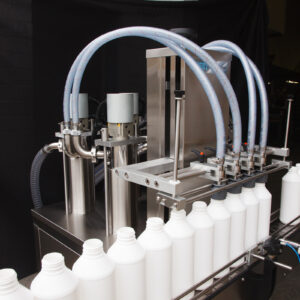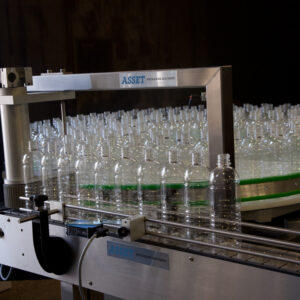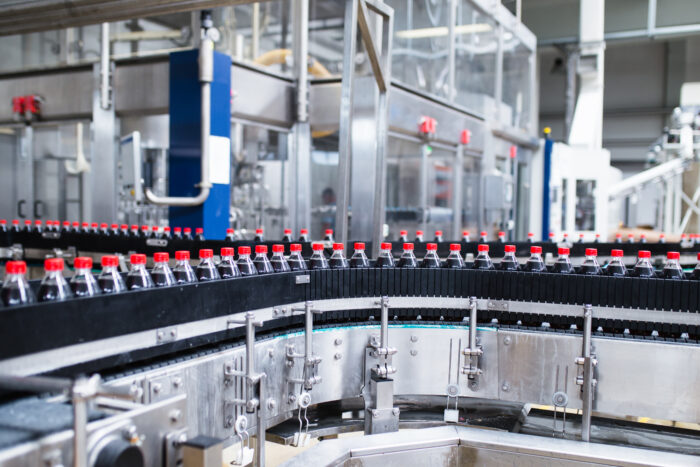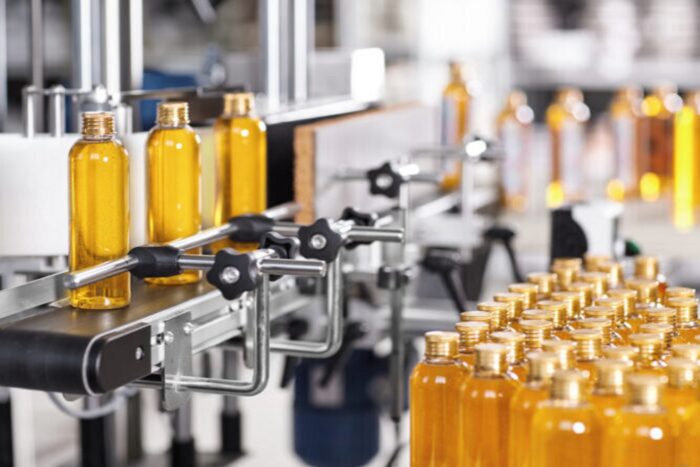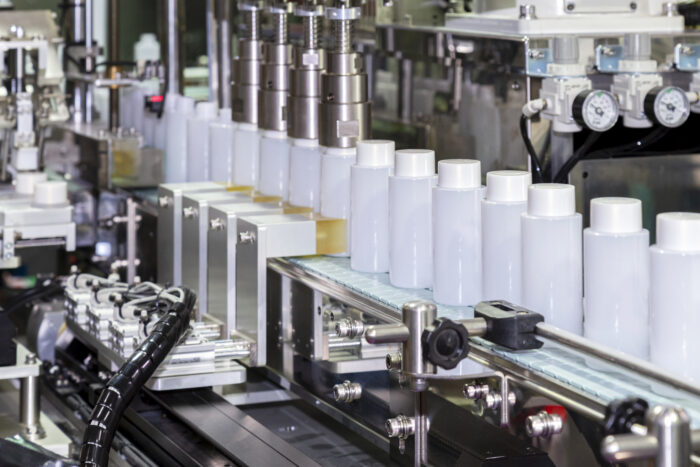The growing packaging industry covers a huge range of products and processes, from filling tiny cosmetics bottles to wrapping huge pallets full of goods. According to the industry research group, Smithers, the global packaging market is set to reach over $1 Trillion by 2024. With a large number of options available, finding and choosing the right product can be confusing for small business owners and even procurement managers of larger corporates.
If you want to invest in efficiency, speed, and accuracy, this article describes the various types of packaging machinery and the industries that use them.
Industries using Packaging Machines
Packaging machines are common in industries such as food processing and pharmaceuticals, but technological advances and increased global competition see many more sectors embracing the technology, including:
– Pharmaceutical
– Agriculture
– Food and beverages
– Industrial chemicals
– Cosmetics
– Logistics
– Building supplies
– Personal care
– Retail
– Electronics

Businesses use packaging machines for a number of tasks, such as filling bottles, packing goods in cardboard boxes, and filling and wrapping pallets ready for shipment.
Main Types of Packing Machines
While there are no standard categorisations for packaging machines, it is possible to group machines with similar functions:
1. Box/Carton machines
2. Filling machines
3. Pharmaceutical Packaging
4. Wrapping and sealing
5. Labelling
6. Packing and palletising
These cover the major types of packaging machine used by Australian businesses, although there are many different options within each category.

1. Box/Carton Machines
Many industries make use of box and carton packaging machines, including cartons for individual products or larger corrugated cardboard boxes used for shipping. For larger industries, automatic machines speed up production, while smaller businesses can use semi-automatic or even manual machines.
Box Erecting
Carton and box erecting machinery forms boxes, skillets, and trays from blanks or pre-cut forms. The machinery selects a form from a pile, erects the box using pre-cut tabs and slots, and adds internal dividers. Next, the machine seals the box by applying adhesive or by heating pre-applied glue on the seams.
Box Sealing/Tape Machine
Once filled with product, box-sealing machines close the box ready for labelling and shipment. Sealing machines use staples, strong sealing tape, or adhesive, while some add a cardboard lid that fits over the box. Some machines seal only boxes of the same size and shape, and need adjustment for other types, while random sealing machines tape boxes of different sizes.

Custom Box Cutting Machines
Custom box cutting machines automatically calculate the optional size for a product, cut and form the corrugated cardboard, and seal it around the product. This leaves less empty space, reducing waste and allowing tighter packing to lower transport costs and greenhouse gas emissions.
2. Filling Machines
Filling machines are common across a range of industries, where they tirelessly fill bottles, cans, pouches and other containers with liquids, solids, and even gases. Most filling machines measure the required dose according to weight, filling level, preset volume, or by counting individual units. They fill containers ranging from small pharmaceutical vials to large chemical drums.
Liquid Filling
Automatic liquid filling machines use nozzles to fill containers as they pass down a production line, usually sending the products to sealing and capping machines. Some machines use a single nozzle, while others use multiple nozzles to increase production, and it is relatively easy to scale machines up.

Semi-automatic versions need a human operator to place goods in position, while manual systems include a handle to fill containers with a preset amount of product more accurately than hand pouring.
Pouch filling
Pouch filling machines pour liquids and powders into pre-formed and printed pouches. Pouches can be the final, outer product packaging or the inner packaging subsequently wrapped in a carton.
Automatic pouch fillers use grippers to transport the pouches to the heads, which are a liquid filling nozzle or augur filler for powders. These inject the correct amount of product into the pouch, and the machines displace air before deflating the bag ready for sealing. For some businesses, such as retail outlets, manual pouch filling machines are particularly useful.
Vertical Form Filling
A derivative of pouch filling machines, vertical form filling machines complete the entire filling and sealing process. Often used for food products, these machines construct bags and pouches from a single roll of film, which may be pre-printed, and fill them before sealing. While plastic is the most common material, foil, paper, and fabric are also used.
Tube Filling
As the name suggests, tube-filling machines pour liquids and creams into plastic, aluminium, or laminate tubes before sealing with a heat seal, or fold and crimp for metal tubes. Suitable for a range of products, they are accurate and can fill at high rates.
Aerosol Processing Machines
Aerosol filling machines fill a can with the product and fit and crimp the valve before pressure filling with the propellant under pressure. Most systems test for leaks by water immersion and weigh the container to prevent overfilling.
Check Weighing
Check-weight machines are a final stage of automated production and weigh every single item passing through. They prevent wasteful overfilling and under-filling, which can lead to customer complaints and action from regulators.
3. Pharmaceutical Packaging Machines
Pharmaceutical packaging machines have to be exceptionally accurate to maintain correct dosages and must work in sterile cleanroom environments. Pharmaceutical products include liquids, pastes, and powders, for which companies use filling machines. For tablets and capsules, the industry uses strip packaging and blister pack technology.
Strip packaging
Strip packaging machines seal tablets or capsules between two aluminium foil strips, and include a feeder system that distributes products to the foil at precisely the right time. Heat-sealing rollers press the strips together and ensure the product is contained in airtight pockets, before cutting the strips into the right size. Most machines include a ‘blind detector’ to spot any empty pockets.
Blister packaging
Blister packaging machines place products in blister packs manufactured from pre-formed thermoplastic with a paperboard, aluminium foil, or plastic backing. Blister packs can be single cavity, where the cardboard acts as a label with the plastic glued or heat-sealed around the edge to deter theft.

Other machines produce multi-cavity packs, like the blister packs used to hold tablets, while clamshell blisters are folder hinged plastic containers heat-sealed around the edges. Blister packs differ from strip packaging because they use preformed plastic blister cavities and inserts rather than moulding the plastic around the product.
Tablet Counter
Tablet counters make sure that machines fill the correct number of small products in a container. Apart from counting tablets and capsules, they can count products such as sugarcoated confectionary, ball bearings, and screws.
4. Wrapping and Sealing
A number of machines wrap and seal products, enclosing products and cases in film and sealing cartons, pouches, and boxes. Many smaller businesses use manual machines, while larger production lines use semi-automatic or fully automatic machines. Sealing and wrapping protects products, maintains hygiene, and makes products tamperproof.
Shrink Wrap
Shrink-wrapping machines, such as the shrink tunnel, cover products in a sheet of heat-sensitive film and apply gentle heat to shrink it around the product. The shrink-wrap may be pre-printed with branding and labels and is used for individual units or bundling products together as multipacks.

Stretch Wrap
Stretch wrap is a very stretchable plastic film, usually manufactured from polyethylene, wrapped securely around items such as palletised goods. The wrap binds goods together securely and, while traditionally a manual process, semi-automatic machines are becoming more common.
Vacuum sealing
Vacuum sealing machines are common in food packaging and evacuate most of the air from a bag before creating an airtight seal. This ensures food lasts considerably longer and allows customers to see the product. Vacuum machines can be manual, semi-automatic, or automatic.
Heat Sealing
Heat-sealing machines, also called bag or band sealers, seal pouches and bags by gripping the top of the package and heating it with a pair of elements. Some machines seal products into a heat sensitive film bag before they enter the shrink tunnel. Heat sealers are often manual, bench-mounted units where the operator inserts the edge of the product and activates the machine.
Foil sealing
Foil sealing machines use electric induction to seal bottles and other containers before capping. Seals are multilayered, containing paperboard, a wax layer, aluminium foil, and a heat-sensitive polymer film. The seal sits on a container or inside the cap, and passes through an oscillating electromagnetic field. This heats the aluminium and melts the polymer around the lip of the container, creating a hermetic seal.
Capping Machines
Capping machines apply and secure caps to bottles, tubes, and drums, and often run in unison with filling machines and foil sealing units. They cap bottles with standard threaded caps, but can cope with tamper proof seals, trigger caps, child caps, corks, tear off caps, and press on closures. Machines can have multiple heads, for extra speed, with manual and semi-automatic versions available.

5. Labelling
Labelling machines apply labels to finished products, allowing companies to add branding and consumer information. The machines can also add tracking, shipping, and customs labels to cases and pallets.
Uses of labels
Security labels include RFID chips, QR codes, smart labels, and holographic labels to deter theft and counterfeiting. Some machines apply labels with shipping and customs information as cases leave the production line ready for transit.
Tracking labels support tracing products from factory to store and also include batch and product information. Machines add barcodes as labels, or print them directly onto packaging before shipment. Finally, branding and promotional labels are crucial for marketing and enticing customers to buy.
Labelling methods
Machines apply labels to products in a number of ways. The easiest is direct printing, where a carton, bottle, or another container already includes branding and information. Pouches, strip packs, blister packs, and plastic containers commonly use pre-printed materials.
For glass and plastic containers, some machines apply wet glue, which is liquid at room temperature. Wet glue labelling is common for bottles because it can handle wet environments and allows decorative labels.

Hot melt labelling machines use solid glue heated to a liquid, and are often used for wraparound labels covering the majority of a container. Pre-gummed labels include pre-coated glue and need dipping in water to activate the adhesive before applying.
Self-adhesive print-and-apply labels don’t require a glue magazine, although the self-adhesive labels are more expensive and the process may be slower than wet gluing. Other labels include heat shrink sleeves, especially for products where traditional labels are not possible. Finally, some goods, notably pharmaceuticals, include a booklet that provides more information for consumers.
6. Packing and Palletising
Whatever products a company makes, most end up packed into cartons and placed on pallets ready for transportation. This can be very labour intensive, so palletizing machinery is becoming more common for this process.
Case Packing
Case packing machines place products into a box ready for shipping, a process often taking place just after box erecting. Most machines group products together for packing, while some pick and place individual products that require special handling or precise placement. In other cases, packing machines group products together for shrink-wrapping.
Conveyors
Conveyors move packaged items through the automated production line, for example, from product filling to sealing, to labelling and finally to packing. Conveyors can range from conveyor tables using rollers, slats or belts, all the way to more complex sorting and unscrambling machines.
Palletising and Depalletising
Palletising machines stack and load or unload products onto pallets with minimal manual intervention. Some stacking machines handle goods of the same size and shape, while others are able to stack irregular cases. Palletizing machines may stack products individually or as entire layers. Depalletising machines perform a similar role in reverse.
Pallet Wrapping
Pallet wrappers are a familiar process for most businesses as the final part of preparing the products ready for shipping, making sure they do not fall off the pallet. Shrink-wrap is the most common method, and semi-automatic and automatic packaging machines waste less shrink-wrap and save time. Some processes wrap products in shrink hoods made from heat-sensitive plastic before passing through a shrink tunnel.

Conclusion
With so many different types of packaging machine, businesses of any size can benefit from the additional speed and consistency. If you are interested in packaging machines, Asset Packaging Machines has many options designed to suit a range of businesses. Contact us to find out how our Australian-made machines can help you boost efficiency and stay ahead of the competition.






